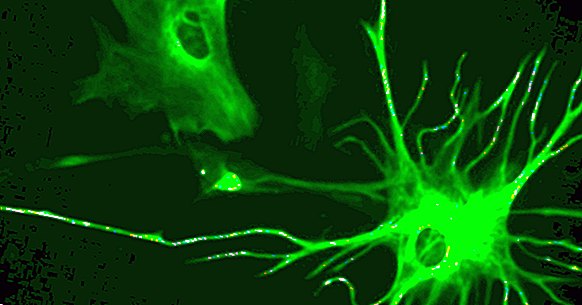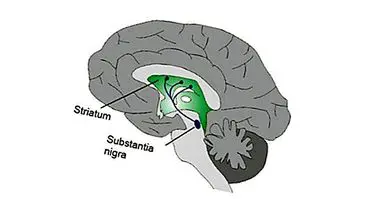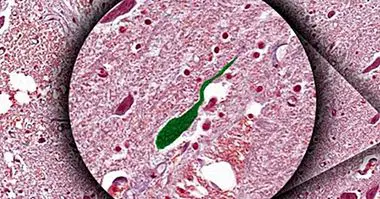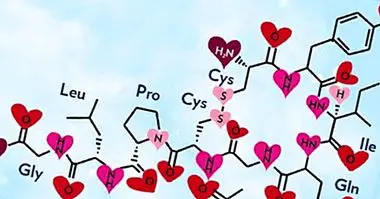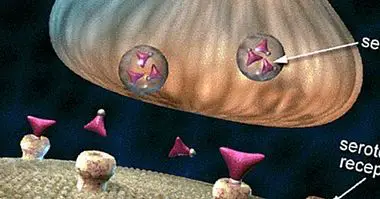Astrocytes: what functions do these glial cells fulfill?
The glial cells are fundamental for the functioning of the nervous system since they contribute structure, nutrients and protection to the neurons, in addition to carrying out other relevant tasks.
In this article we will talk about Astrocytes, one of the most common types of glia . We will describe its morphology and its main functions and differentiate the three types of astrocytes that have been identified.
- Related article: "Glial cells: much more than the glue of neurons"
What are astrocytes?
Astrocytes are a type of Glial cell that is located in the central nervous system , that is, in the brain and in the spinal cord. Like the rest of the glia, astrocytes fulfill support roles in relation to neurons, the main cells of the nervous system from a functional point of view.
These glial cells have a shape that is slightly reminiscent of a star ; its name derives from this fact, since the Greek and Latin words "astron" and "astrum" are translated as "star" or "celestial body". Such a structure is because they have many extensions ("feet") that connect the soma with other nearby cells.
Astrocytes are formed from ectoderm cells , the layer of the embryonic disc from which the nervous system and the epidermis arise, during the early development of the organism. Like most glia, astrocytes start from undifferentiated cells similar to those that give rise to neurons.
Glial cells or glia
As we know, neurons specialize in the transmission of nerve impulses. For this reason they are very effective in this task, but they need the support of other cell types so that the nervous system can function correctly; this is where the glia or neuroglia intervenes, that is, the set of glial cells, which accounts for 50% of the nerve mass.
The specific roles of these cells depend on the type of glia to which we refer. In a general way we can say that they serve mainly to give physical and structural support to neurons , to isolate one from another, to provide them with nutrients and oxygen and to eliminate waste products and pathogens.
Other particularly important glial cells are microglia, which fulfill defensive and immunological functions in the brain and spinal cord, oligodendrocytes and Schwann cells , which form the myelin sheaths that surround the axons and accelerate neuronal transmission in the central and peripheral nervous systems, respectively.
- Related article: "Types of neurons: characteristics and functions"
Functions of astrocytes
For a long time it was believed that the function of the astrocytes was basically structural: "filling the gaps" left by the neurons in the nervous system.
However, research in recent decades has shown that its role, like that of other glial cells, is much more complex.
1. Nervous structure
The astrocytes and the glia in general fulfill the important role of provide physical support to neurons , so that they stay where they are, in addition to regulating the transmission of electrical impulses. Astrocytes are the most abundant glia in the brain, so their structural role has special relevance in this organ.
2. Blood-brain barrier
These glial cells act as intermediates between neurons and the circulatory system , specifically the blood vessels. In this sense, they fulfill a filtering function, so that they constitute a part of the blood-brain barrier, formed by tightly bound brain endothelial cells.
- Maybe you're interested: "Blood-brain barrier: the protective layer of the brain"
3. Contribution of nutrients
The connection of the astrocytes with the vascular system allows them to obtain nutrients, such as glucose or lactic acid, from the blood and can be provided to the neurons.
4. Phagocytosis and waste disposal
Similarly, astrocytes collect waste products from neurons and transport them to the blood so that they can be eliminated . In addition, when an injury to the nervous system occurs, the astrocytes move towards it to phagocytose or eliminate dead neurons, forming scars in the damaged area to accumulate in it.
5. Glycogen reserve
It is possible that astroglia also has the function of storing glycogen, which serves as an energetic deposit, with the objective that neurons can access these reserves in times of need.
6. Regulation of the extracellular space
Astrocytes help maintain ionic balance in the extracellular space; specific, reverse the excessive accumulation of potassium because they are very permeable to these molecules.
Types of astrocyte
There are three types of astrocyte that are differentiated by the cell lineage from which they come, that is, the type of neuroepithelial cells from which they originate. A) Yes, We can distinguish between fibrous, protoplasmatic and radial astrocytes .
1. Fibrous
These astrocytes are located in the white matter of the nervous system, that is, in the zones formed predominantly by myelinated axons. They are characterized by their low number of organelles (cellular subunits with differentiated functions).
2. Protoplasmic
Protoplasmics contain many organelles and they are the most numerous type of astrocyte . They are located mainly in the gray matter of the brain, composed mainly of cell bodies.
3. Radials
The radial glia plays a decisive role during the process of cell migration, since the neurons "travel" through the nervous system relying on this type of astrocytes. However, there are also radial glial cells active in adulthood, such as Bergmann cells located in the cerebellum.

